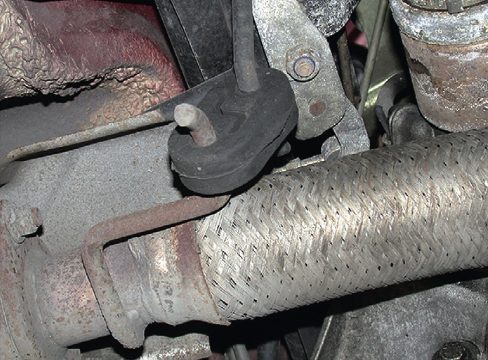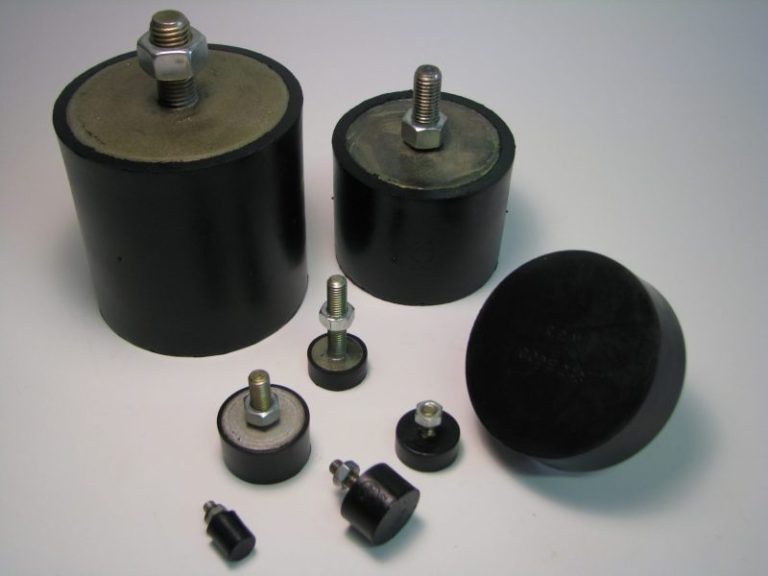Flexible mountings, commonly known as pig noses, are an essential component used in a wide range of applications across various industries. These mountings are designed to absorb shock, vibration, and noise while providing a degree of flexibility in the system. Pig noses are made from a variety of materials such as rubber, silicone, and neoprene, depending on the application requirements.
Flexible mountings are used in various industries, including automotive, aerospace, construction, and marine. In the automotive industry, they are used to isolate the engine from the chassis, reducing noise and vibration. In the aerospace industry, pig noses are used to isolate instruments and avionics from the vibration of the aircraft. They are also used in construction equipment such as excavators, bulldozers, and cranes to reduce shock and vibration.
One of the key benefits of flexible mountings is their ability to absorb shock and vibration. This is particularly important in heavy machinery and equipment, where shock and vibration can cause damage and reduce the lifespan of the machine. The flexibility of pig noses allows them to absorb shock and vibration, reducing the impact on the system and improving its durability.
Flexible mountings also offer a degree of flexibility in the system. This is particularly useful in applications where movement or misalignment is expected. For example, in marine applications, where the hull of a boat is subject to movement due to waves and currents, pig noses can be used to provide a flexible connection between the engine and the propeller shaft.
Another advantage of pig noses is their ability to reduce noise. This is particularly important in applications such as air conditioning units, where noise can be a significant issue. The flexibility of the mounting allows it to absorb and dampen vibrations, reducing noise levels.
When choosing a flexible mounting, it is essential to consider the application requirements carefully. The type of material used, the load capacity, and the temperature range are all important factors to consider. Rubber mountings, for example, are suitable for most applications but may not be suitable for high-temperature environments.
In conclusion, flexible mountings, or pig noses, are an essential component used in a wide range of applications across various industries. Their ability to absorb shock and vibration, provide flexibility in the system, and reduce noise makes them an important part of any machinery or equipment. When selecting a pig nose, it is important to consider the application requirements carefully to ensure the correct mounting is chosen.
Flexible mountings, also known as pig noses, are typically made from rubber, silicone, or neoprene materials that offer a high degree of flexibility and resilience. They are designed to provide a cushioning effect and absorb shock and vibration in a wide range of applications across various industries.
One of the primary advantages of pig noses is their ability to reduce the impact of shock and vibration on the equipment or machinery. This can help to minimize wear and tear and prolong the lifespan of the equipment. In heavy-duty equipment, such as construction machinery, pig noses can help to minimize the impact of shocks from uneven terrain, providing a smoother and more stable ride.
In addition to absorbing shock and vibration, pig noses also provide a degree of flexibility in the system. This is particularly useful in applications where movement or misalignment is expected. For example, in automotive applications, where the engine is mounted to the chassis, pig noses can be used to provide a flexible connection that allows for movement while still providing support.

Flexible mountings can also help to reduce noise levels in the system. By absorbing and dampening vibrations, pig noses can reduce the amount of noise produced by equipment or machinery. This is particularly important in applications such as air conditioning units, where noise levels can be a significant issue.
When selecting a pig nose, it is essential to consider several factors, including the load capacity, temperature range, and chemical resistance of the material. The load capacity of the mounting should be sufficient to support the weight of the equipment or machinery while still providing flexibility. The temperature range of the material should be suitable for the application environment to avoid damage or failure. Additionally, the material used should be resistant to any chemicals or fluids that may come into contact with it during operation.
In summary, flexible mountings or pig noses are an essential component used in a wide range of applications across various industries. Their ability to absorb shock and vibration, provide flexibility, and reduce noise levels make them a critical part of any machinery or equipment. When selecting a pig nose, it is essential to consider the application requirements carefully to ensure the correct mounting is chosen for optimal performance and longevity.
Advantages of Flexible Mountings (Pig Noses):
- Shock and Vibration Absorption: Flexible mountings absorb shock and vibration, reducing the impact on equipment and machinery. This helps to minimize wear and tear, prolonging the lifespan of the equipment.
- Flexibility: Flexible mountings provide a degree of flexibility in the system, allowing for movement or misalignment. This is particularly useful in applications where movement or misalignment is expected.
- Noise Reduction: By absorbing and dampening vibrations, pig noses can reduce the amount of noise produced by equipment or machinery. This is particularly important in applications where noise levels can be a significant issue.
- Versatility: Flexible mountings can be used in a wide range of applications across various industries, such as automotive, aerospace, construction, and marine.
- Cost-Effective: Flexible mountings are relatively inexpensive compared to other methods of shock and vibration control, such as rigid mountings.
Disadvantages of Flexible Mountings (Pig Noses):
- Limited Load Capacity: Flexible mountings have a limited load capacity and may not be suitable for heavy-duty applications.
- Temperature Limitations: The temperature range of flexible mountings is limited, and they may not be suitable for high-temperature environments.
- Chemical Sensitivity: Some types of flexible mountings may be sensitive to chemicals and fluids that may come into contact with them during operation.
- Replacement Required: Over time, flexible mountings may degrade and require replacement to maintain their effectiveness.
- Installation Complexity: Installing flexible mountings may be more complex than rigid mountings, requiring more time and effort.










